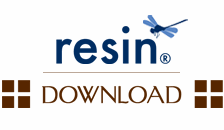

- hessian
- quercus/php
- resin 3.0
- resin 3.1
- resin 4.0
-
- changes
- configuration
- examples
- installing
- overview
- starting
-
- guide: admin
- admin
- amber
- bam
- caching
- clustering
- comet
- database
- deployment
- ejb 3.0
- embedding
- filters
- ioc
- jsf
- jsp
- logging
- messaging
- quercus
- remoting
- security
- resources
- servlets
- third-party
- troubleshooting
- virtual host
- watchdog
- webapp
 |  |
|
The Resin distribution for 3.0.9 has been refactored into two distributions:
The EJB implementation has been refactored to use a new underlying persistence engine (Amber). It would be wise for current CMP/EJB users to take extra care verifying Resin 3.0.9 before putting it into production. See the EJB 3.0 tutorials for examples. Resin 3.0.9 includes an implementation the EJB 3.0 early-draft spec features. EJB 3.0 has a number of significant changes over EJB 2.1:
Resin 3.0.9 has an experimental support for annotation-based transactions. The annotations use the EJB 3.0 markers. The enhancement is configured as part of the <class-loader> configuration. See the @ResinEnhanced transaction tutorial for an example. The following code instructs Resin to enhance MyBean so a transaction
is always started when businessMethod is called. The
The configuration adds the bytecode enhancer with the transaction enhancer enabled. As an experimental feature, servlets can use JDK 1.5 Injection annotations. Hessian and Burlap services can now pick up the protocol headers
using the Allows the taglib schema validation to be turned off. This should only be used in the case where a .tld file in a third-party jar is invalid. The Hessian servlet can now specify its SerializerFactory. You can use this to avoid sending the collection type with Hessian. The filter-mapping can now accept more sophisticated matches, allowing filters to exclude URLs. JSSE now has an <alias> tag to select the alias from the keystore. com.caucho.jsp.JspCompiler can now accept a -conf argument, which points to a web-app configuration. The preloaded tlds can now be configured with the <tld-file-set> tag. By default all tlds in WEB-INF are loaded. In some cases where the WEB-INF contains many files, this is inappropriate.
Copyright (c) 1998-2009 Caucho Technology, Inc. All rights reserved. caucho® , resin® and quercus® are registered trademarks of Caucho Technology, Inc. |
- HOME |
- CONTACT US |
- DOCUMENTATION |
- SALES |
- WIKI
caucho® , resin® and quercus® are registered trademarks of Caucho Technology, Inc.